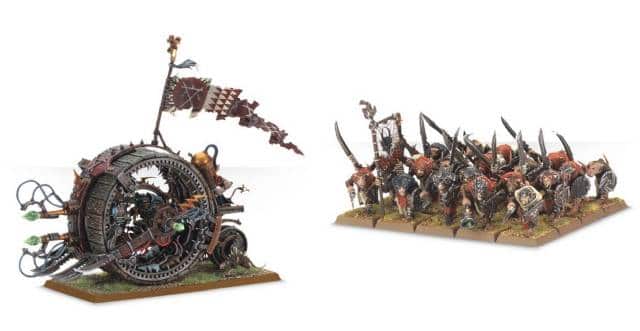Who we are, where we come from
Like the Total War series , also for Warhammeryou can not start talking about Games Workshop, now famous because of its board games and its famous miniatures, but in the long 1975 – the year of its foundations in London by John Peake, Ian Livingstone and Steve Jackson – a modest enterprise specializing in the creation of classic board games before, and then importing role-playing games from America, including the already-known Dungeons & Dragon.
Thanks to the celebrity of Dungeons & Dragon, the Games Workshop bargain, supported by the distribution of the specialized magazine White Dwarf, grew rapidly: the result was the opening in 1978 of the first direct store, followed in the following year foundation of Citadel Miniatures together with Bryan Ansell, the subsidiary company responsible for modeling.Warhammer: Fantasy Battle , along with Richard Halliwell and Rick Priestley.
The original incarnation is engraved by the Ansell, Halliwell, Priestley and Ackland signatures, which dealt with the illustrations of the first version of the rules manual and raised the myth around the races of the game. In fact, in the 1983 edition, the latter were just sketched and some names were later adjusted, like the Dark Elves, first called Night Elves. The game had a great welcome, in spite of some inconsistencies in the rules and a still very perfect game system.
It was with the second edition, however, that went straight into the next year, that the universe of Warhammer Fantasywas expanded and enriched through Bestiario, a book containing the races, the timeline of events, the map of the world and the first information on the birth of the Slann and the Lizard Men, the invasion of the Chaos, the civil war of the Elves and the epic of the Empire. Warhammer soon became a form of worship, so only three years later, in 1987, Warhammer 40,000 , the futuristic spin-off of board games , came to the shelves .
To the roots of the myth
Warhammer’s notoriety, however, is not only the result of its miniatures, its armies, magic, and board games, but it is especially fortunate to its expanded universe, the legends and the myths of the numerous books and stories that elevate the names of Emperor Karl Franz, Grombrindal, Balthasar Gelt and other dozens and dozens of heroes.
From the pages of Bestiario and the chapters of works such as Gotrek & Felixand all the other publications of the Black Library – a publishing house controlled by Games Workshop – has thus brought to life the dark fantasy world of Warhammer, consisting of over ten millennia of history, from the creation of races after the arrival of the Ancients, to the End of the Times, with the war between Chaos and the forces of evil opposed to the realms of good, historical setting in which they are set great part of the latest video games, from Warhammer: End Times – Vermintide , to the Total War: Warhammer saga
Warhammer Fantasyit is not a product of pure invention. Let me explain better: geography, history, and races that make up the world created by Games Workshop sink their roots into a real and current past, and so the continents are merely a transposition with some simple modification of the five existing ones , while the various races have many in common with some of the past realms that existed.
Only to make some examples, the Empire is that a clear transposition of the Holy Roman Empire at the time of the Renaissance, with its courts and its knights, the Kingdom of Bretonnia remembers very close to feudal France and has much in common with the cycle of King Arthur, while the forces of Norsca are nothing more than the cousins of the Viking hordes invading the northern coasts

